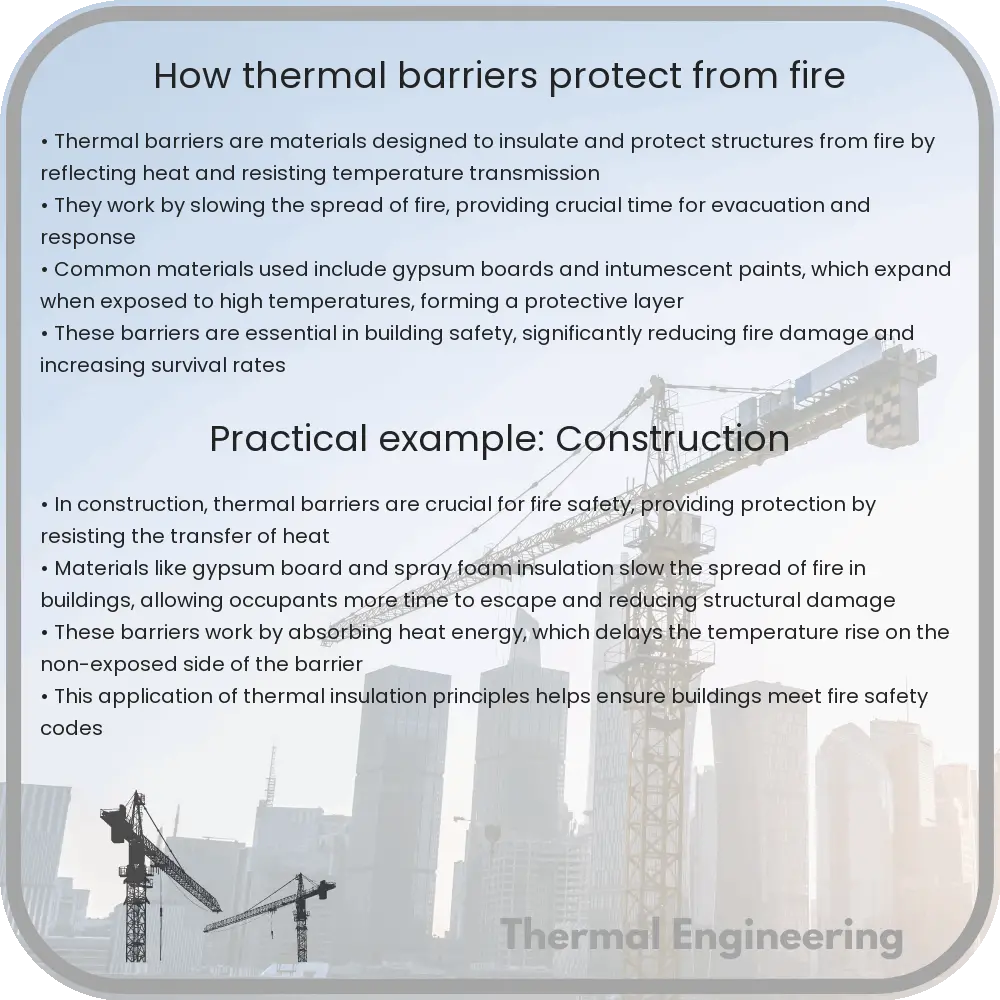Learn about thermal barriers, essential materials and systems that protect structures from fire and heat, enhancing safety and fire compliance.

Understanding How Thermal Barriers Protect From Fire
In the world of engineering, protecting structures and people from the dangers of fire is a critical concern. One of the key strategies employed is the use of thermal barriers. These materials or systems are designed to prevent or slow the spread of fire and heat, increasing safety and providing valuable time for evacuation and response. This article explores the function, types, and applications of thermal barriers in fire protection.
What Are Thermal Barriers?
A thermal barrier is a layer of material applied to structures or used in the construction of certain products to inhibit the transfer of high temperatures, flames, or smoke. The primary function of these barriers is to provide insulation from heat and to delay structural collapse or damage during a fire. They are a critical aspect of fire safety engineering, designed to meet specific fire codes and safety standards.
Types of Thermal Barriers
- Intumescent Coatings: These are paint-like substances applied to steel and other structural materials. Upon exposure to high heat, intumescent coatings swell up, forming a char that insulates the material beneath, effectively increasing the time it takes for the structure to reach critical failure temperatures.
- Fire Resistant Boards: These are rigid panels made from materials such as gypsum, calcium silicate, or perlite. They are used in walls, floors, and ceilings to prevent the spread of fire and heat between compartments of a building.
- Firestop Materials: Used to seal joints and openings in fire-resistant walls and floors, these materials prevent the spread of flames and smoke. Examples include silicone, intumescent strips, or expanding foam products.
How Thermal Barriers Work
Thermal barriers function by providing a physical obstruction that reduces heat flux and delays the onset of critical temperatures within protected areas. The effectiveness of a thermal barrier is largely determined by its thermal inertia, which is a measure of a material’s ability to absorb and retain heat. Materials with high thermal inertia are slow to heat up and slow to cool down, which can be crucial in fire situations.
Applications of Thermal Barriers
- Building Construction: In buildings, thermal barriers are used in walls, roofs, and floors to compartmentalize fire, preventing it from spreading and allowing occupants more time to escape. They are also used in the protection of structural elements like beams and columns to maintain the structural integrity of the building during a fire.
- Aerospace Industry: Thermal barriers are critical in the aerospace industry to protect sensitive components and passengers from the extreme temperatures generated both by normal operations and in emergency scenarios, such as a fire.
- Automotive Industry: In cars, thermal barriers are used in components like firewalls and exhaust systems to protect occupants from heat and to prevent the spread of fire within the vehicle.
The Importance of Fire Safety Compliance
Ensuring that thermal barriers meet local fire safety standards and codes is crucial for legal compliance and safety. These standards dictate the minimum performance characteristics of thermal barrier systems, including their resistance to fire and heat. Compliance not only helps in protecting lives and property but also reduces legal risks associated with fire incidents.
In conclusion, thermal barriers play an indispensable role in modern safety engineering. By understanding and implementing these systems, engineers and architects can significantly enhance the fire resilience of structures, contributing to safer environments for everyone.